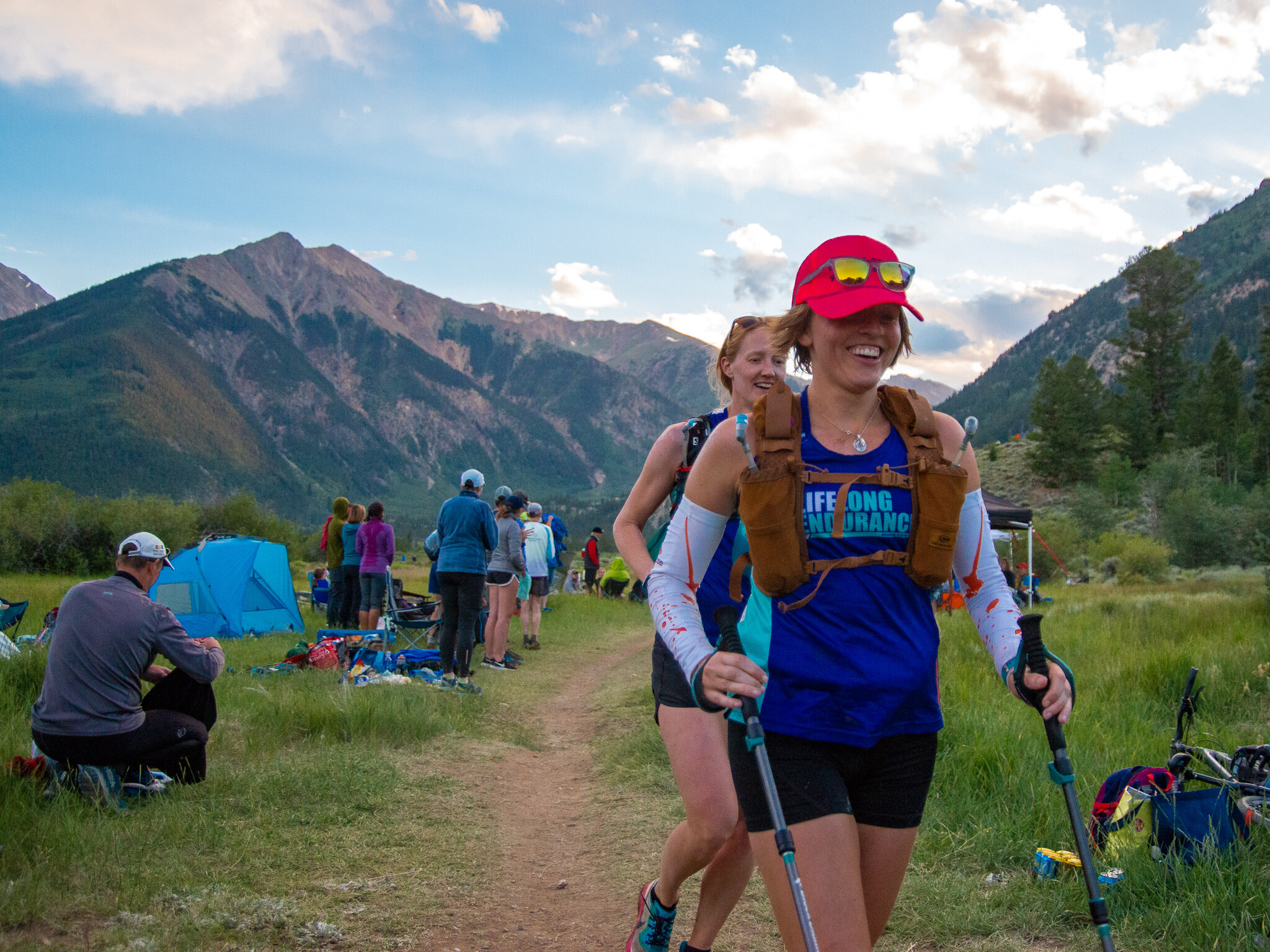The Logistics of the Leadville Trail 100: FAQ
The Leadville Trail 100 Lottery announcement is January 19, while you anxiously wait to see if you will be trekking over Hope Pass this August, our coaches have answered the most Frequently Asked Questions on the Leadville Traill 100 Forum. This will be a mult-part series, so stay tuned
1. What is a good crew size?
What do you plan on expecting from your crew? Do you want them at every aid station, or just the big ones? The crew will be in charge of transporting your belongings and your pacers. Parking is tight at a long of the aid stations, so you will not want your pacers taking their own vehicles, then trying to figure out how to get back. They will also serve as your pit-crew at each station, helping you change shoes and clothing, re-pack your pack, and get you rolling out quickly and with everything you need. Ideally, you will have one crew chief who will figure out logistics, and a couple of crew members to help with driving and getting gear together. Too many people and you might have chaos, just one and they will be exhausted, frazzled, and a little lonely. Ideally, three to five crew members will keep you efficient and compact. Of course, pacers can serve as crew while not running.
2. How many Pacers should I have?
This will vary on your goals, pace, and your pacers’ abilities. Sections that are open to pacers are:
Winfield to Twin Lakes (miles 50-62.5)
Twin Lakes to Outward Bound (miles 62.5-76.9)
Outward Bound-May Queen (miles 76.9-97.8)
May Queen- Finish (miles 87.8-100)
At a maximum, you can have four pacers. If your pacers are not as apt to run super long distances, are recovering from an injury, or you plan on really pushing hard, going for four pacers, all running shorter distances is ideal. However, if one or all of your pacers are able to run longer distances without a problem, you could get away with two or three. A pacer running more than 1/3 of the race should be avoided for several reasons. First, if they get injured or fatigue, you are running a very long time unsupportive. Second, it becomes hard for a pacer, even a seasoned ultra runner, to give their full attention to an athlete when running a mini-ultra themselves. Read more about pacers and crew here.
3. Should I run without pacers?
If you are considering running without pacers, the first thing you should ask yourself is “why?” If you do not know many runners, or are coming from out of state and do not know anyone in the area, there are other solutions. First, you can post on the various Facebook pages and forums that you are looking for pacers. There will likely be folks who did not get into the race who will be more than happy to get a glimpse of the course and run with you. If you had pacers drop at the last minute, you can find “angel pacers” at most available aid stations. An angel pacer is a good samaritan runner who waits around at the aid stations in order to help runners who do not have their own pacer. Usually, they either planed on pacing someone who dropped, or they are just a big supporter of the race.
If your reasoning for not wanting a pacer is because you want the extra challenge of running solo, consider the following: have you run (and finished) multiple 100 mile races in the past? Are you in good health and training has gone according to plan? Are you highly self-motivated, even when dealing with exhaustion? Do you have adequate drop bags along the course? Are you really sure you want to spend that much time alone in your head? If the answers to all of these questions is “yes,” then go for it.
Lifelong Endurance athletes and pacers, Jeremy Barry and Bret Naber trade jobs at Twin Lakes while supporting Coach Kaitlyn.
7. How much time should I spend at aid stations?
Time spent at an aid station can be a bit of a paradox. If you “camp out” at each one, you can loose a bit of time. There are thirteen aid stations at the Leadville Trail 100, if you spend a minimum of five minutes at each station, you are losing a little over an hour from your time. However, if you fly through the aid stations and do not listen to your body’s demands for rest, you could end up crashing pretty hard and losing a similar amount of time. It is work examining when you might want a longer break, and which aid stations you can hustle through. If you are feeling good and can eat and walk at the same time, do that opposed to stopping and sitting. If you are struggling to stand and need a moment to get down some calories, give yourself that time. Just be aware of the cut-offs and ask your pacers and crew to keep you accountable.
8. Should I use drop bags?
Either using drop bags transported by race officials or by your crew is an extremely useful tool. Some things you might want in your drop bags are: a change of shoes, a change of socks, a warm (or cool) set of clothes, sunglasses, hats, a first-aid kit (especially with any medication you might need) and extra special snacks that might not be provided by the aid stations. If you depend on the race officials to transport your drop bag, make sure it is clearly marked, secure, and dropped off at the appropriate time and location. If you are depending on your crew and pacers to deal with your drop bag, try and give them a list of what you might want at each aid station so they can have it out and ready to go.
Lifelong Endurance coaches athletes in running and triathlon events, including ultra marathon distances. Coaches Kaitlyn Yonke, Andrew Simmons, and Lexi Miller are all experienced in coaching and/or competing at the Leadville Trail 100. To see coaching options, go to our store.
Coach Kaitlyn Yonke makes a quick transition at Twin Lakes at the 2019 Leadville Trail 100
4. I got in by lottery, what should I do now?
First, celebrate! The odds were low, but the lottery gods smiled upon you: woohoo! Second, start to build up that base; you have eight months of training ahead. It is wise to find a training plan or coach to work with you over the next several months to keep yourself on track. Begin doing research, or talking to those with experience, to find out what you need, what is recommended, and what to expect. Also begin thinking about who you want as your pacers and crew. Be sure to ask folks early, especially if they have to travel to get to the race. It is also wise to have lodging and transportation figured out as early as you can.
5. Where should I stay?
Leadville is an extremely small mountain town that has not been taken over to “resort culture.” This means that there are very limited hotels, Air B&Bs, or VRBOs in town. There is one hostel, but that will limit your space for crew and pacers. Try to make your lodging arrangements by May so you can insure you have a place to stay. There are more options in near-by Summit County and Buena Vista (both about 30 minutes away) and even some options at Twin Lakes (which runners come through twice.) Be aware that cell service is poor and messages might be delayed to pacers and crew who are staying elsewhere.
6. I am not from Colorado, when should I arrive to best acclimate?
We will address acclimatization in more depth in our next post, but in regards for travel arrangements, you can give yourself as little 24 hours to adjust.Your body will not have time to adjust beforehand, so it will adapt during the race. Just be sure you are keeping tabs on your heart rate and effort. Be aware that you may not be able to run the same way you trained at a lower elevation and adjust your goals accordingly. Listen to Coach Andrew Simmons discuss racing at altitude here.
Coach Katie paces athlete Melanie White down Hope Pass at the 2019 Leadville Trail 100



